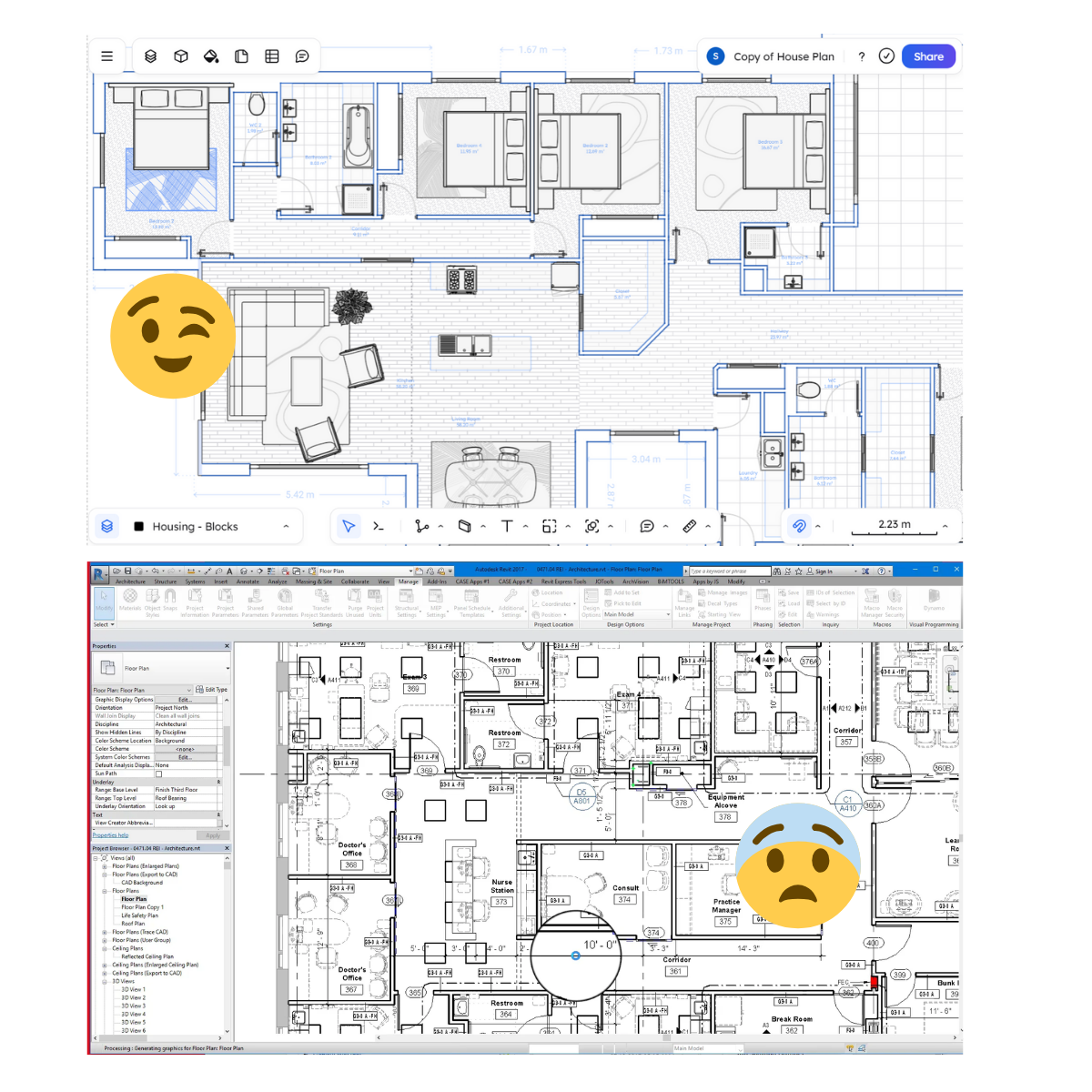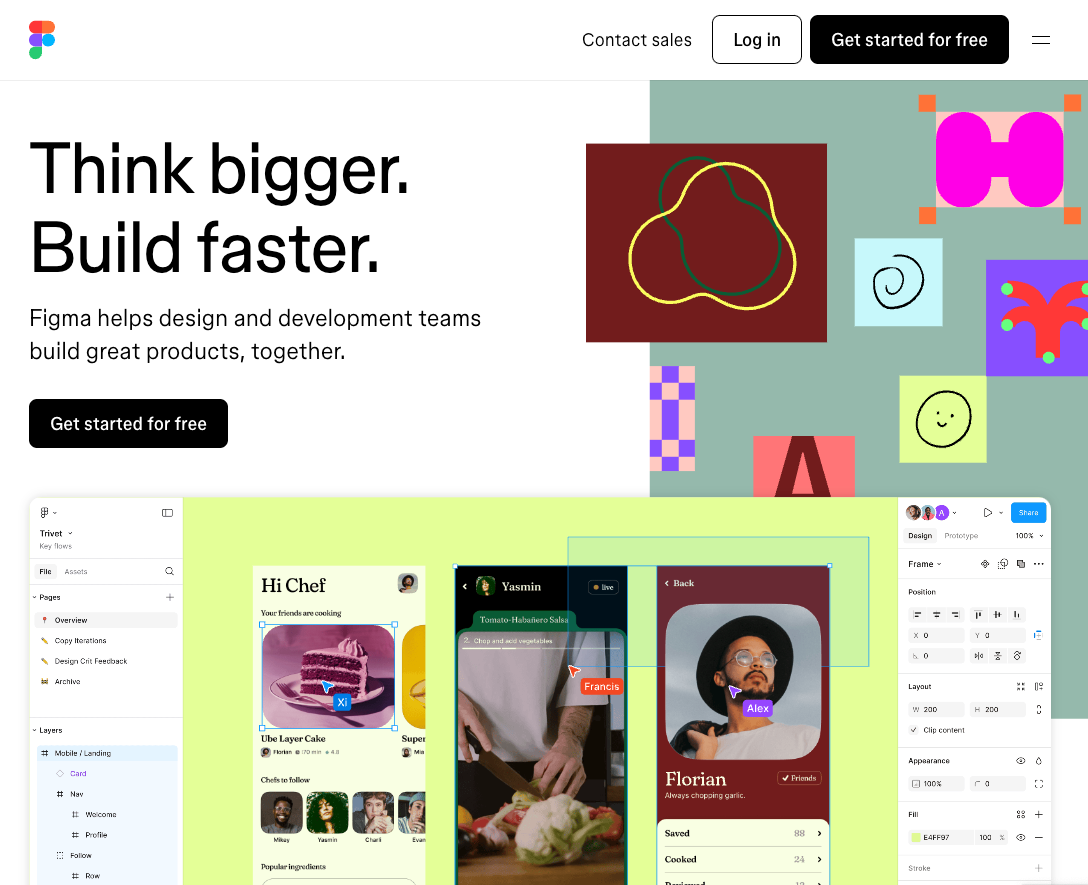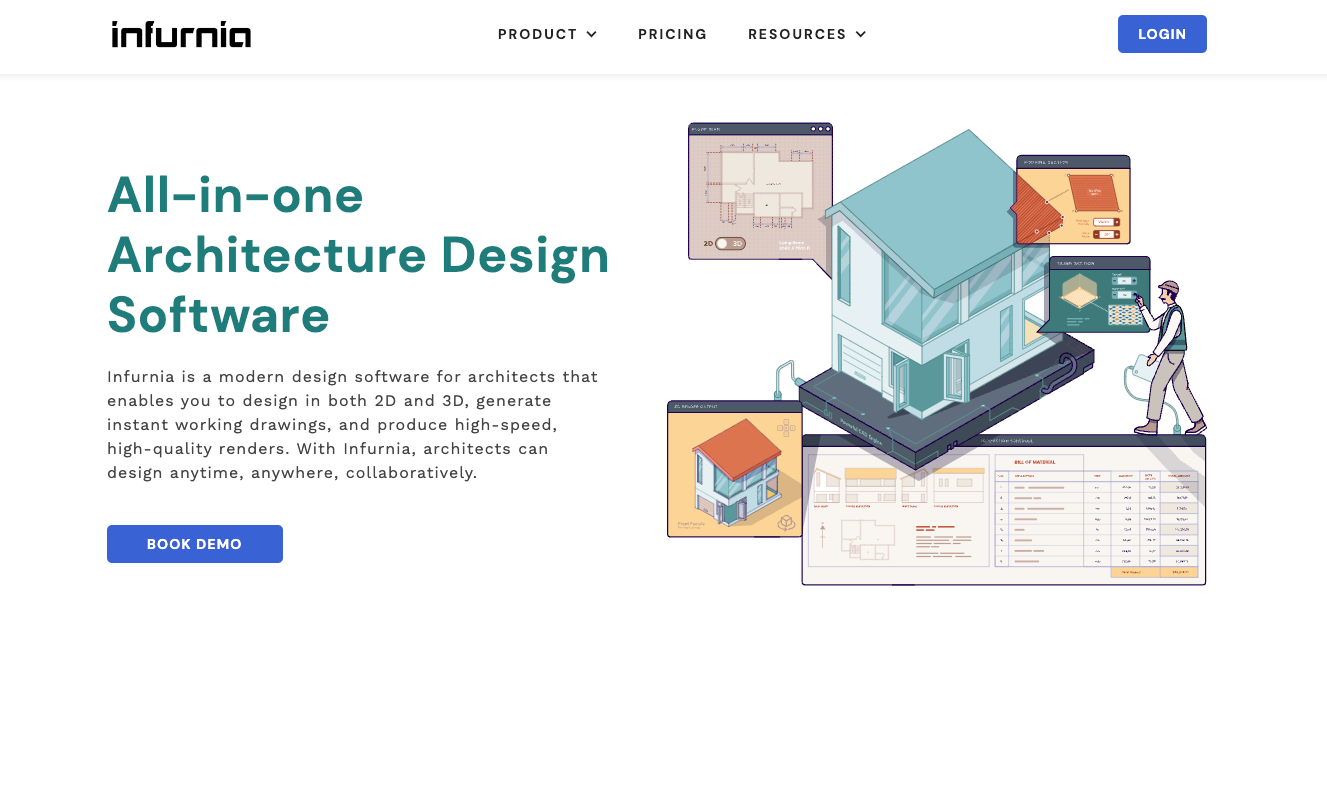Revit alternatives 🔄 which will eventually kill Revit 💥
Who will kill Revit and move BIM to a whole new level? Some Revit alternatives are popping up and may challenge Revit in the near future.

In the world of Architecture, Engineering, and Construction (AEC), Autodesk Revit has been the undisputed king for over two decades.
However, just as Figma disrupted Adobe's stronghold in the design industry, new cloud-based BIM platforms are emerging to challenge Revit's supremacy.
This shift mirrors the transformation we witnessed in the design software landscape, where user-friendly, collaborative tools revolutionized the industry.
Why Revit's Position Is Vulnerable
Technical Limitations
- Aging Architecture: Built on 20-year-old technology, Revit struggles to meet modern computing demands
- Performance Issues: Large BIM models often lead to slow loading times and crashes
- Limited Interoperability: Complex workflows when trying to integrate with modern design tools
- Resource-Heavy: Requires significant computing power and specialized hardware
User Experience Challenges
- Steep Learning Curve: Requires months of training to achieve basic proficiency
- Complex Interface: Overwhelming UI that prioritizes features over usability
- Limited Accessibility: Desktop-only software in an increasingly mobile world
- Collaboration Friction: File-based sharing instead of real-time collaboration

Why Revit Still Dominates (For Now)
Industry Inertia
- Conservative AEC Market: The construction industry traditionally adopts new technologies slowly
- Established Workflows: Firms have built extensive libraries and processes around Revit
- Training Investment: Companies have invested heavily in Revit training and certification
- Market Integration: Deep integration with other Autodesk products and industry standards
The Sunk Cost Effect
- Extensive time invested in learning Revit
- Large financial investments in licenses and training
- Accumulated libraries of Revit families and templates
- Established workflows and documentation standards
Adobe fall: A Blueprint for BIM's Future
The software industry has repeatedly shown that even the most entrenched market leaders can be disrupted by innovative newcomers.
Adobe's recent history serves as a stark warning for Autodesk and particularly for Revit's future in the BIM space. Just as Autodesk dominates the AEC industry today, Adobe once held a seemingly unshakeable position in the creative software market. However, the last decade has demonstrated how quickly market dynamics can shift when innovative alternatives emerge.
The Rise of New Design Champions
Two companies in particular have revolutionized the design software landscape, challenging Adobe's long-standing dominance:
Canva: Democratizing Design

- Disrupted Photoshop's market by capturing 75% of common use cases
- Reached a $20 billion valuation by 2024
- Success factors:
- Intuitive, user-friendly interface
- Extensive library of ready-to-use visual assets
- Significantly lower learning curve
- Subscription model accessible to individuals and small businesses
- Cloud-based collaboration features
Figma: Collaborative UI design

- Captured 80% of the UI/UX design market from Adobe XD and Sketch
- Valued at over $20 billion in 2024
- Key innovations:
- Browser-based accessibility
- Real-time collaboration
- Lightweight yet powerful feature set
- Version control and design system management
- Thriving plugin ecosystem
- Notably, despite Adobe's $20 billion acquisition attempt in 2022, the deal was ultimately abandoned due to regulatory concerns, demonstrating Figma's position as a true independent competitor
The Parallel with BIM
These disruptions in the design software market provide a blueprint for understanding how the BIM industry might evolve. Just as Canva and Figma identified and solved specific pain points in design workflows, new BIM platforms are emerging with similar strategies:
- Focusing on ease of use without sacrificing power
- Prioritizing collaboration and accessibility
- Building extensive libraries of ready-to-use components
- Leveraging cloud technologies for better performance
- Creating intuitive interfaces that reduce learning curves
The success of these design tools shows a clear pattern: when software prioritizes accessibility, collaboration, and user experience while maintaining professional-grade capabilities, it can successfully challenge even the most established incumbents.
This pattern is particularly relevant for the BIM industry, where Revit's complexity and collaboration limitations mirror the issues that Adobe's products faced before the rise of alternatives like Figma and Canva.
If you're curious about what's new in BIM and Architecture, come join us on the Future Architecture YouTube channel.
I share regular tutorials (in French & English), interview founders of new BIM and AI tools, and explain how AI will change architecture.
See you there! 👋
Which are the best REVIT alternatives?
Snaptrude the online BIM tool for early stage
What it is: A cloud-native BIM platform that combines the simplicity of SketchUp with the power of Revit.
I made an interview of Snaptrude CEO where here he explained more about the concept of Snaptrude as a Revit alternative for early stage design.
Key Features:
- Direct modeling in browser with no software installation
- Real-time collaboration with unlimited team members
- Automated cost estimation and quantity takeoffs
- Built-in rendering engine
- AI-powered design assistance
- IFC and DWG import/export
- 3D model library with thousands of components
Best for: Architecture firms looking for a modern, collaborative approach to early-stage design and development.
Pricing: Contact for custom pricing
Spacio the AI powered conceptual modeling and performance analysis tool
What it is: An AI-powered architectural design platform focused on automated space planning and optimization.
Spacio is more flexible than Revit for early stage design
Key Features:
- Automated model generation
- Space optimization algorithms
- Quick iteration of design alternatives
- Integrated energy and performance analysis
- Cloud-based collaboration
Best for: Architects and developers working on residential and commercial projects who want to leverage AI and generative design for space planning.
Pricing: Contact for custom pricing
Rayon The 2D Collaborative design tool
What it is: A collaborative to draw 2D plans faster alternative to Revit and Autocad : a kind of Figma for architecture

Key Features:
- Modern, intuitive interface
- Library of objects
- Clean interface
- Web based collaboration
Best for: Design-focused firms that prioritize sustainability and need powerful visualization tools.
Pricing: Starting at $29/user/month
Infurnia All-in-one architecture design software
What it is: A web-based architecture and interior design platform with robust BIM capabilities.

Key Features:
- Browser-based 2D/3D design tools
- Real-time collaboration
- Custom component library
- Automated BOQ generation
- Mobile-friendly interface
- Client presentation tools
- Integrated project management
Best for: Architecture and interior design firms looking for an all-in-one cloud solution.
Pricing: Starting at $200/month for 2 editor
The Future of BIM Software
Emerging Trends
- AI Integration
- Automated design suggestions
- Code compliance checking
- Generative design capabilities
- Smart object recognition
- Cloud-Native Architecture
- Browser-based access
- Real-time collaboration
- Automatic versioning
- Cross-platform compatibility
- Simplified Workflows
- Intuitive user interfaces
- Quick start templates
- Automated documentation
- Integrated visualization
- Open Ecosystems
- API-first approach
- Plugin marketplaces
- Interoperability standards
- Community-driven content
Conclusion
While Revit's position remains strong today, the writing is on the wall. The success of Figma in disrupting the design software market provides a clear template for BIM's future. The next generation of cloud-native, collaboration-first platforms is already emerging, and they're learning from both Revit's strengths and weaknesses.
The question isn't if Revit will be displaced, but when and by whom. The winning platform will likely combine the ease of use and collaboration features that made Figma successful with the robust technical capabilities that AEC professionals require. As these new tools mature and gain adoption, we may see a rapid shift similar to what happened in the design industry with Figma.
For AEC professionals and firms, the key is to stay informed about these emerging alternatives and be prepared to adapt as the industry evolves. The future of BIM is likely to be more accessible, collaborative, and integrated than ever before.
If you're curious about what's new in BIM and Architecture, come join us on the Future Architecture YouTube channel.
I share regular tutorials (in French & English), interview founders of new BIM and AI tools, and explain how AI will change architecture.
See you there! 👋